NOTES FROM THE DEEP
This (very occasional) blog is my sometime scribbling-pad from exploring the deep ocean...
There is something for everyone in the sea - incredible beauty for the artist, the excitement and danger of exploration for the brave and restless, an open door for the ingenuity and inquisitiveness of the clever, a new world for the bored, food for the hungry, and incalculable material wealth for the acquisitive – and all of these in addition to the pure clean wonder of increasing knowledge.
• I post more frequent commentary about deep-sea science in my LinkedIn feed
• For online diaries I've produced from expeditions, please visit TheseAreTheVoyages.net
• For my popular-science articles in magazines & newspapers, and books, please see Writing
A not-so-brief history of exploring the deep ocean
| A timeline of events from the Palaeolithic to 2020, spanning discoveries in deep-sea biology, developments in diving technology, and other threads - to trace some of the whens, hows, whos and whys of exploring the deep... (more) |  |
Deep-sea mining: beyond the headlines
| A decade ago I used to think deep-sea mining was a fairly straightforward issue, but now I've come to realise how it's a complex topic, particularly in its wider context, which doesn't lend itself well to soundbites. So here's an attempt to set out the issues as I see them... (more) | 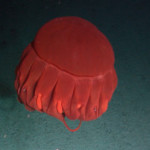 |
How much of the deep sea have humans seen (and how much have I seen)?
| A new paper estimates the area of the deep ocean floor that people have seen from submersibles and cameras. It's tiny - about the size of Rhode Island. And how much of it have I seen? (more) | 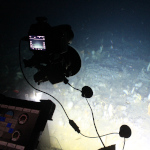 |
Pressure and deep-sea animals: an egg-splanation
| An uncooked chicken egg is not as strong as a deep-diving submersible; I can crush an egg easily with my hand. So what happens if we send an egg down into the ocean depths? That's what we did as an experiment during the Ocean Census Arctic Deep expedition... (more) | 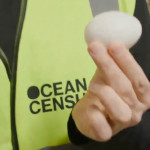 |
A deep-sea crustacean did not inspire the cinematic Alien
| The latest movie in the "Alien" franchise - Alien Romulus - is now in cinemas, and the deep-sea amphipod Phronima is popularly claimed as an inspiration for the eponymous creature of those films - but is that true? TL;DR: no... (more) |  |
The Titan implosion was unprecedented in submersible diving history
| Submersibles have taken many more people into the deep ocean than the number of people who have been into space, with none previously experiencing a catastrophic hull failure and far fewer fatalities overall than space travel. The investigation of the Titan will now seek to understand why it was such an exception... (more) | 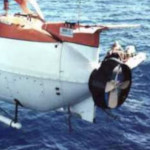 |
The inner space race: then and now
| Sixty years ago today, Jacques Piccard and Don Walsh climbed into an undersea craft called the Trieste and dived nearly 11 kilometres down to the deepest point in the ocean. But they are much less well-known than the first astronauts who walked on the Moon, and the story of the earlier deep-sea pioneers whose achievements led to their dive is seldom told... (more) | 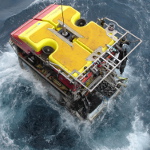 |
Spires of sulfur
| Deep-sea vents unlike most others, in a seafloor crater in the Antarctic - with spires of sulfur spewing sulfuric acid, a "dead zone" of deceased shrimp and squid... and yet life finds a way. Some background on the discovery of "Kemp Caldera" and its inhabitants, revealed in our research paper out this week... (more) | 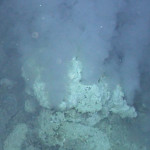 |
Exploring environmental changes in the Antarctic with Blue Planet II
| I joined the BBC Blue Planet II expedition to the Antarctic, where we made the first dives in minisubmarines to reach 1 km deep there. As a deep-sea biologist, those dives gave me new insights into how “dropstones” (typically car-sized boulders that fall from passing icebergs) shape the pattern of life on the ocean floor around Antarctica. But the expedition also provided an opportunity to collect data about the environment... (more) | 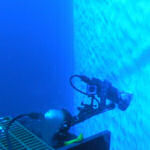 |
Science behind TV's Octonauts
| If you want to feed the fascination of your little ones with the ocean, the Octonauts adventures are great - they firmly feature real science. So here are a few of my favourites with the links to the actual research papers that they're based on... (more) | 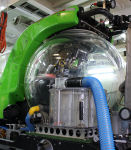 |
Deep-sea versus sci-fi
| William Beebe, who was one of the first two bathynauts to venture into the ocean depths, once wrote that "at these abyssmal depths there are fish that can outdragon any mere figment of human imagination". So what sci-fi aliens resemble inhabitants of our blue planet? Here's a quick run-down... (more) | 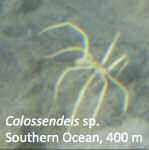 |
Just how big are the oceans as a habitat?
| "The ocean: the largest habitat on Earth" - Sir David Attenborough's first line in the "prequel" to Blue Planet II actually takes us down a rabbit-hole to think about an often-heard statement in a different way... (more) | 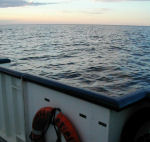 |
What do Sir Roger Moore and a deep-sea fish have in common?
| Sir Roger Moore (whose James Bond once quipped "Where there's an ocean, a marine biologist is never on holiday" in The Spy Who Loved Me) has another claim to fame: according to one of his friends, he may have inspired the choc-ice-on-a-stick Magnum ice cream. But Sir Roger may share the distinction of inspiring ice-cream innovation with a deep-sea fish... (more) |  |
Mapping the deep, and the real story of the "95% unexplored" oceans
| We're often told that we know more about the surface of Mars / the Moon / Venus (delete at whim) than the depths of the ocean, and that 95% of the ocean is "unexplored". But is that true? It depends on what we mean by "explored", and how we map the ocean floor. So let’s examine some of the facts behind the “95 percent unexplored” meme and those comparisons with our celestial neighbours... (more) | 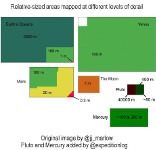 |
Onwards & downwards: when ROVs or AUVs are lost in ocean exploration
| This week saw the news that the Nereus hybrid remotely operated vehicle (HROV) has been lost while exploring the Kermadec Trench at a depth of 9.99 km. Here is a round-up of some of the remotely operated vehicles (ROVs) and autonomous underwater vehicles (AUVs) that have been lost in the service of deep-sea exploration - but also what they had achieved, and how the research in which they were involved has continued... (more) | 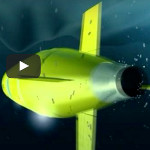 |
Mining at deep-sea vents: what are the impacts on marine life?
| Deep-sea hydrothermal vents are one of the seafloor environments now being targeted for mining of their mineral resources, because the "chimneys" that grow at vents are particular rich in metals such as copper, which we need for modern technology. But what are the possible impacts on marine life from mining at deep-sea vents? (more) | 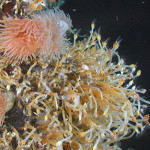 |
No longer in the dark: our choice for the future of the deep ocean
| The frontiers of space have provided iconic images of exploration, such as Buzz Aldrin's photograph of a footprint on the lunar surface. Meanwhile, the first "bathynauts" to reach one of our planet's greatest features - the mid-ocean ridge - did so four years after Apollo 11 touched down in the Sea of Tranquility. And now that that the deep ocean is no longer out of sight, it is our choice whether its future iconic images will inspire or shame us... (more) | 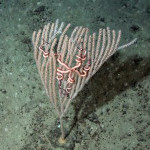 |
Can outreach make you a better scientist?
| As a researcher who shares their work with wider audiences, why do I bother? And the short answer is: it’s not out of a sense of “duty”, but because my research benefits from it... (more) |  |
Sex at vents: lights on or off?
| If life at hydrothermal vents and other "chemosynthetic" habitats in the deep ocean is divorced from the sunlit world above, why do some species there follow seasonal cycles in their sex lives? Shouldn’t the passage of our tilted planet around its star be completely irrelevant to life in these chemically-powered islands on the ocean floor? (a post for Deep-Sea News)... (more) | 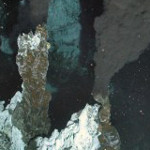 |



